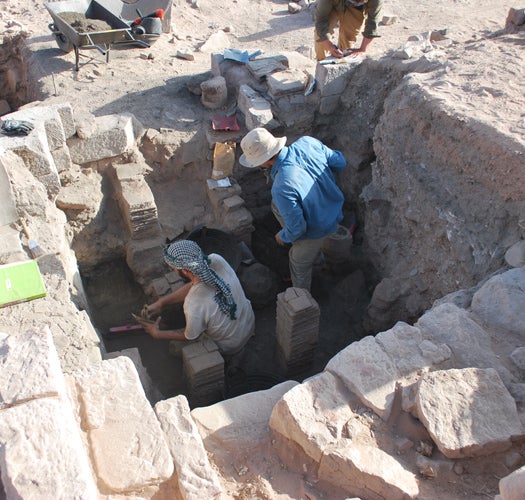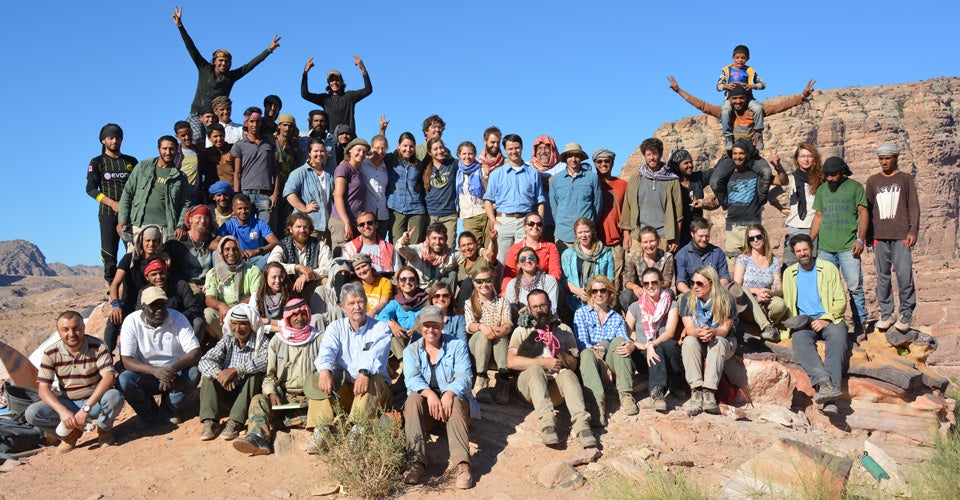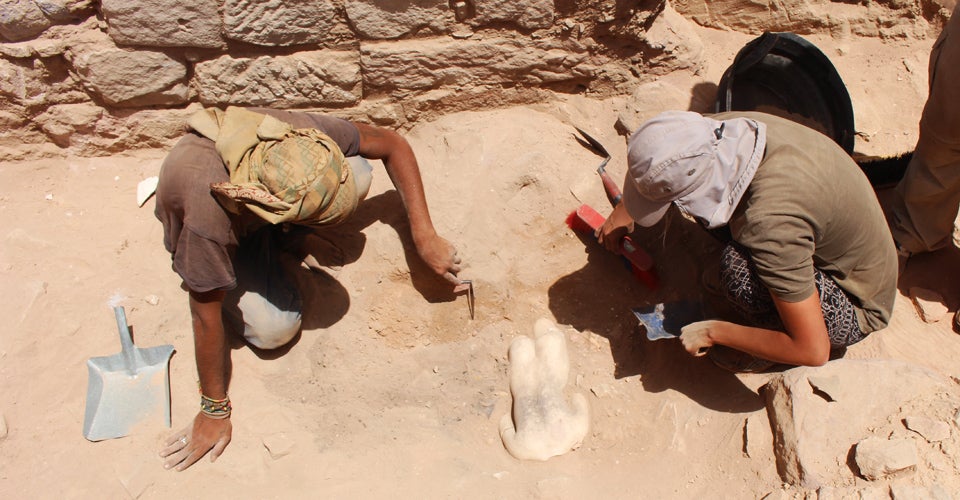STUNNING FIND
ECU faculty, students discover unexpected treasures
This summer, East Carolina University students and faculty members helped unearth surprising discoveries while excavating the ancient Nabataean capital city of Petra, Jordan.
ECU professor of anthropology Dr. Megan Perry is co-directing the Petra North Ridge project with fellow archaeologist and historian Dr. Thomas Parker of North Carolina State University. Their task is to piece together the puzzle of an enigmatic people.
The city was the center of the Nabataean Kingdom until it fell into ruin sometime between 300 and 700 A.D.
It remained virtually unknown to the Western world until a Swiss explorer discovered it in 1812, at which point the civilization’s relics were still beautifully preserved thanks to the protective nature of the rock formations.
Since then, researchers like Perry have been asking questions about the lives of ordinary people who lived there.
Perry and Parker’s project has focused on excavating first- to fourth-century A.D. houses in the ancient city, along with first-century B.C. to first-century A.D. tombs used by its residents to bury their dead. Two faculty members and eight current and former ECU students, along with students and staff from other institutions, returned to the Middle East this summer for six weeks in May and June to follow up on excavations performed in 2012 and 2014.

The statues depict the goddess Aprodite and her companion, Eros.
Exploration in a new area of the city’s northern edge revealed a surprising discovery — the remains of a first- to second-century A.D. complex that contained a caldarium, or heated room typical of Roman-style baths.
“The function of the complex is not clear,” said Perry, “but it could have served a domestic function similar to other buildings nearby, albeit a more elaborate version.”
Perry said the find led the team to change its hypothesis on the history of the neighborhood.
“If the caldarium indeed is part of a larger villa, that would imply that elite individuals lived in this sector of the city — and essentially in the same neighborhood as more moderate dwellings,” she said. “If it is a public bath, it would mean that Roman-style bathing was more widespread amongst the Nabataeans than we previously thought.”
The debris that eventually filled this complex also contained the project’s most stunning find, according to Perry — two almost-complete marble statues of the goddess Aphrodite along with her companion, Eros, that probably date to the second or third century A.D.
“The statues likely had been imported, based on stylistic characteristics along with the marble qualities. These hypotheses will be tested further through art-historical analysis of the sculpting as well as chemical analysis of the marble itself,” said Perry.
“Finding such items,” she added, “really makes you see how museum objects — usually presented devoid of any context — had ties to actual people and places in the past.”
ECU Maritime Studies alumna Melissa Price (M.A. ’15) served as the project conservator and directed the statues’ cleaning.

A caldarium, a heated room typical of Roman baths, was another unexpected discovery.
“She provided suggestions for their conservation — essential for these exquisite objects that rival those found in the Metropolitan Museum of Art or the Louvre,” said Perry.
The statues are largely intact, and additional portions of the heads and upper extremities were also recovered.
Excavation within the tombs, supervised by project staff that included ECU anthropology graduate students Akacia Propst, Mallory Provan, Tara Stanko and Emily Sussman, and ECU alumni Alex Garcia (M.A. ’14) and Jessica Walker (B.A. ’07), continued to uncover more remains of the city’s ancient inhabitants. The remains help illuminate the diet, disease and mortality profiles of the city along with practices they used to bury and commemorate the dead.
Dr. Thad Wasklewicz from ECU’s Department of Geography, Planning and Environment, along with ECU geography graduate student Kailey Adams, provided greater three-dimensional documentation of the burials and the domestic structures. They used terrestrial laser scanning for geospatial analysis of artifacts and bones at the site.
Over the years, the Petra North Ridge Project has served as a study abroad opportunity for students from ECU and other institutions. This year, 17 students from across the United States participated in the project for course credit, gaining hands-on knowledge in archaeological field techniques and experience with Middle Eastern culture.
“Many of our graduates become practicing archaeologists for government organizations or private companies,” said Perry. “Our field schools provide first-hand experience in the methodological choices and critical decisions professional archaeologists make every day.”
Funding for the excavation is provided primarily by grants from the National Endowment for the Humanities and the National Geographic Committee for Research and Exploration, with additional support from ECU’s Thomas Harriot College of Arts and Sciences and the departments of anthropology and geography, planning and environment; the al-Himma foundation of Amman, Jordan; the American Center of Oriental Research; and the American Schools of Oriental Research. The grants supporting the project run through the end of the 2016-17 academic year.
Now that the excavation process is complete, Perry and her team move to the analysis and publication phase of the project.

The students gained hands-on knowledge of archaeological field work and experienced Middle Eastern culture.
